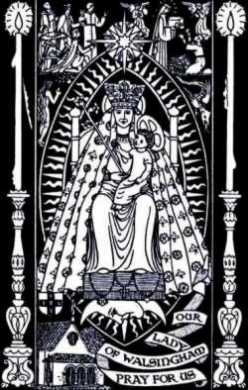



" The passing life of the senses doesn't lead to knowledge of what our Self is. When we clearly see what our Self is, then we shall truly know our Lord God in great joy."
Mother Julian of Norwich (1342 - 1416)
In 1373, when she was 30 years old, an Englishwoman had a visionary experience during a serious illness. After she had thought about it,perhaps soon after the experience, perhaps as much as fifteen years later,she wrote a relatively brief account of the visions and what they meant to her. But in 1393, she was still meditating on her experience and perhaps had begun to write a longer, more theologically-centered analysis. By 1394 she had become an anchorite, living in a cell attached to the parish church of St. Julian in Norwich (which may be the reason for the name we know her by); she was visited there by Margery Kempe in about 1413, and she was still living there in 1416.
This is all we know of Julian's life. Some scholars believe that she was at one time a member of a religious community; others think not. Some think that she wrote out her book (which modern editors call Showings or Revelations of Divine Love); others believe that the work was dictated.
We do know from Showings that she was well-read in scripture and in spiritual works, both older and contemporary, so somewhere she had access to a good library. Her writing style is not the least bit naive: she handles complex thoughts clearly and is rhetorically effective. The rhetoric is perhaps easier to see in the first, shorter text; the complexity in the later, longer text.
Julian's emphasis on God's love and desire for human salvation becomes more significant when one thinks of the period in which she wrote. The Black Death came not only in 1349; it came again and again for over a century. The Church on whose faith Julian relied was in schism, with two or more popes claiming authority, from 1378 to 1417. Monastic writers and parish priests were teaching that all this was a punishment from an angry God. It is as if Julian saw the need to offer an antidote to the pervasive fear of sin and death and damnation; in both of her texts, she did just that.
It is a great joy to visit this shrine church, attached to the great St Johns Timberhill to meditate on Mother Julian and the patrimony of Mysticism we have in our Church. We who are guided by God in His Church would do well to remember the words of she who lived through more difficult times, and to take heart from the rising of Walsingham from the grave of the reformation.
All shall be well,and all shall be well,and all manner of thing shall be well.



_Black_s_s_s_s_s.jpg)
